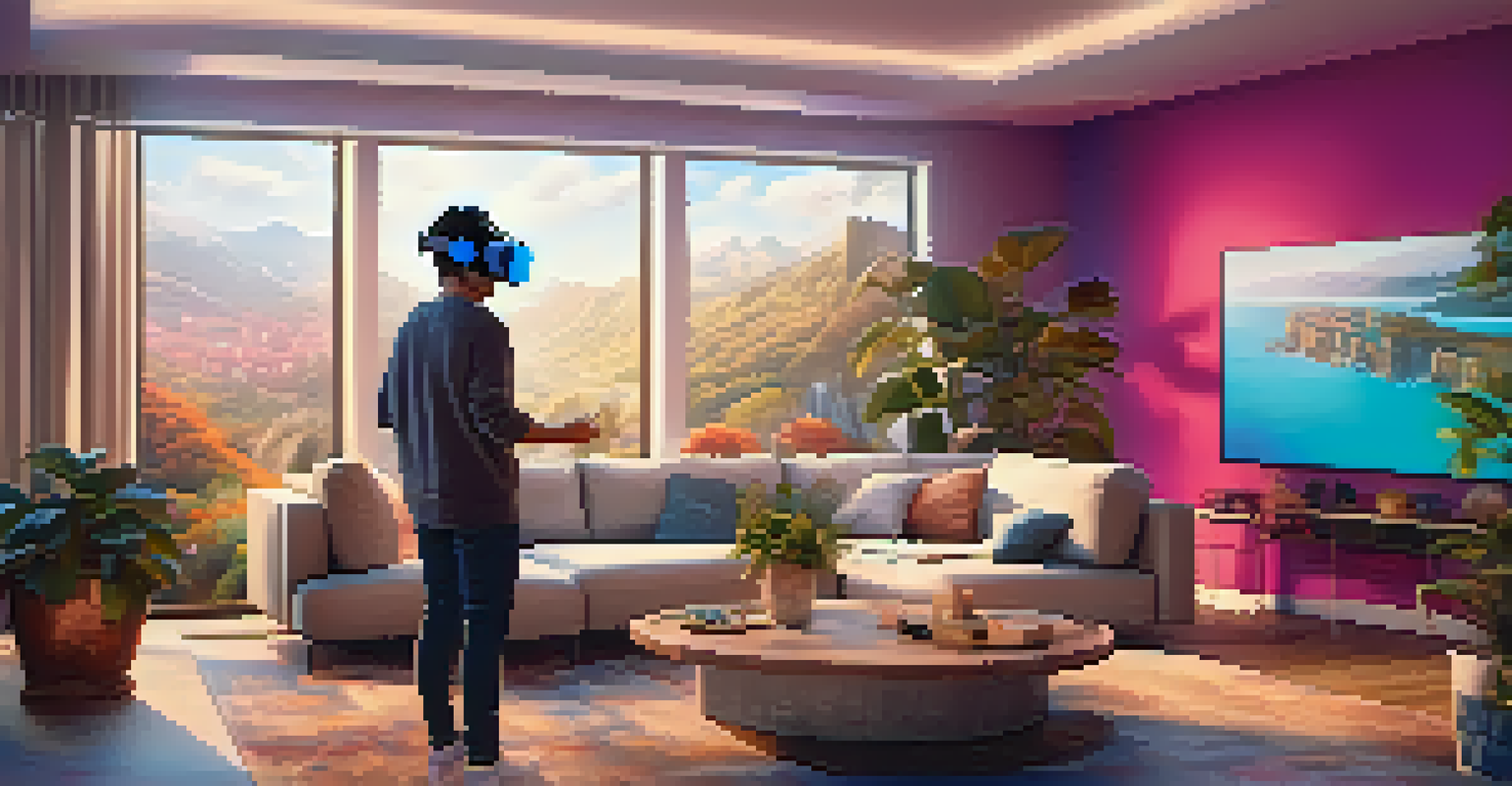Increasing Engagement with Interactive Virtual Tours

Understanding the Power of Virtual Tours for Engagement
Virtual tours transform the way we experience spaces by allowing users to explore environments from the comfort of their homes. They provide an engaging alternative to traditional photos or videos, as users can navigate at their own pace. This immersive experience creates a connection that static content simply can't match.
Virtual reality is a new way of seeing the world, and it can be used to tell stories that are compelling and immersive.
For businesses, leveraging virtual tours can lead to increased interest and higher engagement rates. Imagine a potential customer exploring a hotel or a real estate listing as if they were actually there; this can significantly influence their decision-making process. By offering interactive experiences, you not only capture attention but also foster a deeper emotional connection with your audience.
Furthermore, these tours can be tailored to highlight unique features or stories, making each experience memorable. Just like a guided tour led by a charismatic host, a virtual tour can provide insights that resonate with viewers, ultimately enhancing their overall engagement.
Creating an Immersive Experience with Interactive Elements
To truly engage users, it's essential to incorporate interactive elements that encourage participation. This can include clickable hotspots, 360-degree views, and multimedia content like videos and audio narrations. By inviting users to interact, you empower them to explore according to their interests, making the experience more personal.

Consider adding quizzes or polls within your virtual tour. This not only enhances interactivity but also provides valuable insights into your audience's preferences. For example, asking users what they liked most about a space can help you tailor your offerings in the future.
Enhance Engagement with Interactivity
Incorporating interactive elements like clickable hotspots and multimedia content creates a personalized experience that captivates users.
Remember, the goal is to create an environment where users feel they are part of the experience. Just as a well-designed museum exhibit captivates visitors, your virtual tour should engage users in a way that keeps them coming back for more.
Utilizing Technology to Enhance Virtual Tours
The right technology can make or break your virtual tour's effectiveness. High-quality graphics, seamless navigation, and responsive design are crucial for creating a captivating experience. Investing in advanced tools like VR headsets or AR features can elevate your tour, making it not just an exploration but an adventure.
We are all storytellers. We just need to find the right medium to tell our tale.
Consider integrating social media sharing options, allowing users to showcase their favorite spots. This not only increases your reach but also encourages user-generated content, which can be incredibly powerful for building community and trust. When users share their experiences, it creates a ripple effect, drawing in new audiences.
Additionally, don't overlook the importance of mobile optimization. With more people using smartphones to explore, ensuring your virtual tours are accessible on all devices will maximize engagement and reach. After all, it’s all about meeting your audience where they are.
Showcasing Unique Features of Your Brand
Every brand has a story to tell, and interactive virtual tours can be an incredible medium for storytelling. Use these tours to highlight what makes your brand unique, whether it's a quirky design element, a history of craftsmanship, or community involvement initiatives. This personal touch can resonate deeply with your audience.
For instance, a local restaurant could include a behind-the-scenes look at their kitchen or showcase the farmers who supply their ingredients. This transparency builds trust and allows customers to connect with the brand on a personal level, which can lead to increased loyalty.
Tailor Tours for Diverse Audiences
Customizing virtual tours for different demographics ensures that content resonates with varied interests, increasing user engagement.
Moreover, by focusing on unique features, you not only engage users but also position your brand as memorable. Just like a captivating novel draws readers in with its rich details, your virtual tour should leave a lasting impression that keeps users talking.
Engaging Different Audiences with Tailored Tours
Not all audiences are the same, and your virtual tour should reflect that diversity. By creating tailored experiences, you can cater to different interests and demographics. For example, a university could develop separate tours for prospective students, parents, and alumni, each highlighting relevant aspects.
Consider using data analytics to understand user behavior and preferences. This insight can guide you in crafting personalized experiences that speak directly to your audience's needs. If you know that younger visitors prefer interactive elements, emphasize those in their tours.
Ultimately, the more you tailor your tours, the more likely you are to engage users. Just like a well-curated playlist resonates with different musical tastes, a customized virtual tour can captivate various audience segments, keeping them engaged and invested.
Promoting Your Virtual Tours Effectively
Creating an engaging virtual tour is just the beginning; you also need to promote it effectively to attract viewers. Utilize your website, social media channels, and email newsletters to showcase your tour. Eye-catching teasers or behind-the-scenes content can pique interest and drive traffic.
Don't hesitate to collaborate with influencers or partners who align with your brand values. They can help amplify your reach and introduce your virtual tours to new audiences. Their endorsement adds credibility and can make your offering more appealing.
Promote to Attract Viewers
Effectively promoting your virtual tours through social media and targeted ads is crucial for reaching and engaging potential audiences.
Additionally, consider running targeted ads to reach specific demographics. Platforms like Facebook and Instagram allow you to tailor your ads based on user interests, ensuring that your virtual tour gets in front of the right people. Just like a good book needs an enticing cover, your promotional efforts should draw people in.
Analyzing Engagement and Iterating for Improvement
Once your virtual tour is live, it’s essential to analyze engagement metrics to understand what’s working and what isn’t. Tools like Google Analytics can provide insights into user behavior, helping you gauge which parts of the tour resonate most. This data is invaluable for refining and enhancing the experience.
Don’t be afraid to gather feedback directly from users. Simple surveys or follow-up emails can yield insights that data alone may not capture. Asking users what they enjoyed or what they’d like to see improved can guide your next iteration.

Remember, engagement is an ongoing process. Just like a favorite TV show evolves with its audience, your virtual tour should adapt based on user feedback and engagement metrics. This commitment to improvement will keep your content fresh and exciting, ensuring continued interest.